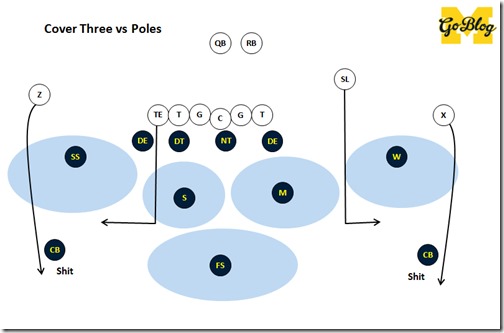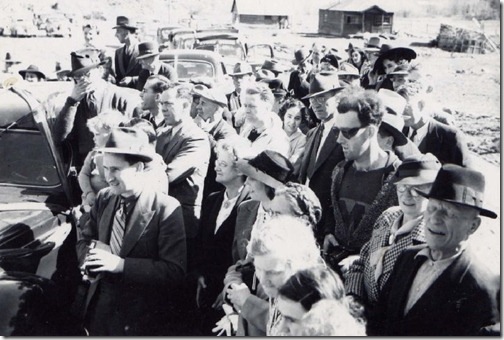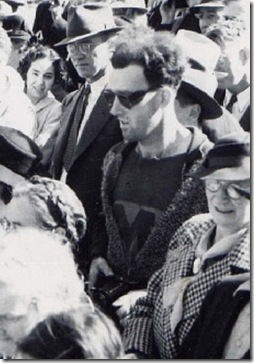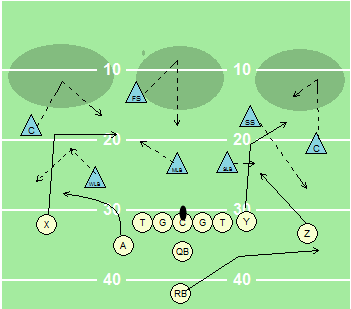pattern reading
Next time you see this you'll know what's going on
In previous layman's discussions on how fancy newfangled anti-spread defenses function I've talked about how Quarters works, and how MSU used aggressive alignments with it to dominate the run game at the cost of greater risk of getting beat over the top. Each time I alluded to the fact that Saban's defense is similar in concept except where Quarters is a Cover 2/Cover 4 hybrid, Saban's is a Cover 3/Cover 1 hybrid.
We will see it this year. Every defense uses some Cover 3 and Cover 1 as a changeup, but Saban's base system, now all over the SEC, has spread into various Michigan opponents. Penn State kept it around while transitioning to Bob Shoop's version of Quarters. Maryland had it last year; not sure if their 4-3 transition includes a coverage shift. I think BYU (which is going back to 3-3-5 with Bronco Mendenhall overseeing it personally) is expected to as well. Michigan State has played with it, since it's similar to what they do normally. Anyway I thought it'd be fun to get into it now, so we'll have it to reference later.
Resources/hat tips:
- Rufio of Cleveland Browns SBNation blog Dawgs by Nature.
- Matthew Brophy's incomparable series on Alabama's D: part i, part ii, part iii, and his "Rip/Liz" video.
- Eleven Warriors' Kyle Jones's film study
- Ricky Muncie of Crimson Tide SBNation blog Roll Bama Roll
- Chris Brown, of course. Of course.
- Pre-emptive thanks to actual football coaches who post in the comments and point out where I got something wrong or over-simplified.
I'm Not a Coach Disclaimer
I'm not a football coach. I'm a guy on the internet who read a lot about football.
Basics of One-High Defenses
Cover 3 is probably the most basic defense in existence. It is the defense you learn on Day 1 as a high school freshman, if not before. At that level it is a "go to this spot and then find work" scheme, past that there are techniques coaches teach to cover the gaps. Here are the two basic versions that Saban uses against standard 2x2 formations:
If you picked up on the fact that "Liz" and "Rip" begin with the same letters as "left" and "right" (or you know your port and starboard colors) you have my permission to eat a cookie.
Joe Paterno used variations of this (Rip is very close to his base defense*) since the Chatelperronian, and like Neanderthal toolkits it only looks crude until you see it in the hands of a master.**
Some things to know that we'll use later:
- The receiver numbering system is the same as in Quarters: start from the sideline and work your way in until you're at the center. It's where they are at the snap, not before, in case motion messed with that.
- The path you take to your zone matters a great deal. Note how guys running toward their zones are actually going through weak points in the coverage. This is for "routing" purposes: if you're there a receiver can't be.
The latter is true for all zone defenses, but it's a stress point for Cover 3 because the holes in the zone are places the offense can attack either quickly (7-9 yards downfield in the seam) or easily (deep downfield once the free safety has committed). Cover 3 coaches teach defenders to be in the way so receivers have to re-route to covered places.
The tradeoff is natural coverage strength to the middle of the field, to the detriment of the flats—if you've ever watched an NFL defense that seems to constantly be tackling fullbacks squirting out of the backfield, that's why.
The problem with Cover 3 is the same problem with Cover 2: those frikkity vertical routes:
The problem remains with pretty much any set of routes that stem from a vertical release.
The old-fashioned answer to this is play more man defense, and certainly Cover 1 (example diagram) is a complementary coverage to any Cover 3 team. In Cov1, aka "Man Free" defense, corners stay on the receivers, the erstwhile "curl/flat" guys stay on the #2's, and the middle linebacker over the RB takes the RB.
But if you're playing man-to-man defense, you'd better have men who can win their battles 97%+ of the time against theirs. If you need to activate that free safety to double up a dangerman, now you're giving up "front"—how many defenders are participating in your run fits, and once it's not an 8-man front anymore you're weak against the run. Offenses will also use rub routes, or exploit matchups, e.g. have a quick slot receiver sprint across the formation until he loses the linebacker trying to keep up.
These were problems for Saban to a much greater degree when he was dealing with the kind of talent the Cleveland Browns drafted during his DC days. By the time he got to MSU he already had his Rip and Liz and his Cov1 amalgamated into a hybrid scheme he called "pattern matching."
[After the jump]
-----------------------------
* The Paterno-era "Hero", and "Sam" in the linked diagram were early examples of hybrid space players, and the zone-blitzing 8-man front it spawned was the basis of Rocky Long's 3-3-5 defense.
** …who discovered children were being sexually abused in his locker room and didn't tell the police because football reasons.
-----------------------------
Safety not guaranteed. This is a photo from 1940 that clearly shows a TIME TRAVELER who has visited the re-opening of the South Fork Bridge in British Columbia:
The time traveler is the guy in the crazy sunglasses who looks like he walked out of Bursley and into history. That shirt he's wearing has a block M on it:
If you doubt this is actually a time traveler please note that Skinner from the X-Files is keeping a close eye on him. QED.
This guy's next mission is to find a sleepy bungalow in Mentor, Ohio and bang really loudly on the windows on the night Jim Tressel is conceived. Oh no… what if he's already done it?
Next guy hi. Michigan's looking for an assistant basketball coach and with the public "no thanks" from IPFW head coach Dane Fife—Mr. Self Aggrandizement also publicly shot down overtures from Indiana despite not being offered a job by either—speculation focuses on a trio of guys with state of Michigan ties. If you're looking for a guy with high major experience, Lickliter assistant LaVall Jordan is your man. If you want a guy who's recruited one of the better mid-major teams in the state, Oakland assistant Saadi Washington is your man. If you want a former Globetrotter who is "one of the most fashionable coaches around" and has a name that sounds like a vicious mixed drink of rum and bitters, Bacari Alexander is your man.
That's what I thought. Bacari Alexander for the win.
Meanwhile in attempting to get someone, anyone to join the basketball program: Sam Webb reported on WTKA this morning that Isaiah Sykes did pick up a Michigan offer this weekend. Surprisingly for a guy who's bounced around so much, his transcripts are in fairly good shape. So that's good news.
It's less good that Sykes didn't commit immediately and plans on trips to Central Florida and Arkansas. Orlando may be a trip to take a trip but anyone going to Fayetteville is going on business. Michigan fans grimly remember the recruiting saga of Chicagoan Patrick Beverly. Michigan had late-rising Beverly all locked up until a trip to Arkansas resulted in a Razorback commitment and rampant speculation about payoffs. The parallels are uncomfortable.
Cover three pattern read. Clemson blog Shakin' the Southland has a fantastic analysis of a cover three system that uses "pattern read" principles to prevent itself from getting sliced into little tiny cubes in the passing game, something that would be pretty nice if Michigan could swing this year. Pattern reading is pretty much what it sounds like: the defensive backs read what the receivers are doing and react accordingly. Here's an example:
Strongside:
Flat defender [Ed: SS] drops to the flat zone and picks up the RB when he crosses his face. The H/C defender [SLB] starts his drop up the seam but then takes the first receiver that breaks inside, and tries to wall him off. The deep corner takes the deepest threat, which in this case is the TE on a flag route.
Weakside:
Flat defender [WLB] starts his drop underneath the #1 receiver who is running a Dig route, and keeps inside leverage on him. Once he sees someone cross his face he jumps him in the flat (#2).
The H/C defender (MLB) runs with the #1 receiver on the Dig, remember he's supposed to cover any inside breaker into his zone. If the Z couldn't be walled off and breaks underneath, he must keep him in front of him, and try to stay under that Dig route.
The Corner closes on the most dangerous threat he sees, while the FS is reading the QB and breaks on any throw.
Depending on the formations and routes presented, the players in the zone take different actions. If everyone's on the same page (and has the requisite athleticism) your zones become hellishly adaptable man coverages that provide most of the advantages of zone and most of the advantages of man. The catch is that "if." Smart Football explains in a post on Alabama's pattern reading defense:
The two zone-dropping schools of thought are to teach “spot-drops” or “pattern-reading.” One can overemphasize the distinction, but generally spot-dropping is easier to teach and was the traditional approach. For example, if your outside linebacker is responsible for the weak-flat, he will take his read steps and, upon reading pass, will drop to a spot and then react to the QB’s eyes. A big advantage with spot-dropping is simply that it is easy to teach to, say, a run-stuffing inside linebacker who spends most of his time on run game pursuit and shedding blocks.
The difference between a spot drop and a pattern read is in the complexity of the algorithm. Spot drop:
- GOTO X
Hypothetical Pattern read for a hook/curl defender:
- If (receiver #2 goes vertical) goto seam
- If (receiver breaks outside of me) goto smash
- If (receiver breaks inside) goto dig
One of the reasons Alabama is so good is that Saban is crazily efficient at coaching his guys up with pattern reading. Robots make robots, and robots are good at algorithms.
Will Michigan use this? Eh… I'm not sure. The linebackers were pretty clueless against both run and pass next year and have seen their defensive responsibilities shift. Adding complicated pattern reading on top of that is probably a bridge too far. Maybe we'll see it in some of the players, but probably not Mouton and Ezeh. It sounds like a move to a pattern read is one akin to moving from a regular gap blocked scheme to a zone running game: you've got to commit to it 100% or it doesn't help.
Chicago is full of lies. Remember early this week when everyone was panicking about the imminent expansion of the Big Ten and dissolution of the NCAA? Yeah. Here's Teddy Greenstein repudiating a previous report that sent everyone into a tizzy:
Big Ten expansion timetable isn’t on fast track
Commissioner says conference will stick with 12-18 month window
Good work! That will show whoever wrote that spurious article about Big Ten expansion acceleration. Who was that again? I couldn't find it on Bleacher Report… hmm, weird, there's a link right on this page…
Looks like Big Ten expansion timetable accelerating
Conference could decide to add schools in next few months
April 17, 2010|By Teddy Greenstein, Tribune reporter
Whoops. The Sun-Times would not let Bob Stoops-to-ND die and is still leading the race to the Bleacher Report bottom, but here's a point for the Tribune. I am not holding my breath for an orgy of clucking akin to the one after the BR-spawned and KC Star-abetted Pitt-to-Big Ten rumor.
First chance to see. If you haven't gotten enough of slightly disorganized football games with unexplained strictures on the defense, the North-South Ohio All Star game is Friday at 7 PM on "SportsTime Ohio," which you probably get if you live in Ohio. Math demands that Lexington quarterback/defensive back Courtney Avery will be on your screen at all times:
A four-year starter at quarterback for Lexington, Avery is just one of four defensive backs on the North roster and one of two true cornerbacks.
"It's going to be a little different, because I'm not playing quarterback," said Avery, a two-time All-Ohio first team defensive pick and the owner of virtually every Lexington passing record. "It will be nice to focus just on defense. It will give me a taste of what I'll be doing at Michigan."
Antonio Kinard and Jake Ryan are also on Avery's team; the Talbott brothers are on the South team. Preferred walk-on kicker Carey Spear is on the North team, too. It's a little more data on all those guys, at the very least.
Etc.: Blurry Evan Smotrycz video. Guy has more driving ability than most of our guards. Touch the Banner previews the NFL draft, and MBN has a couple of nice videos from the Spring Game.






21